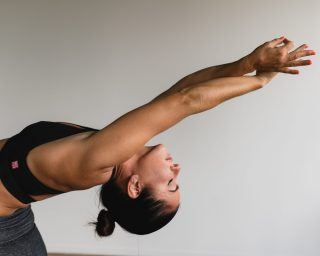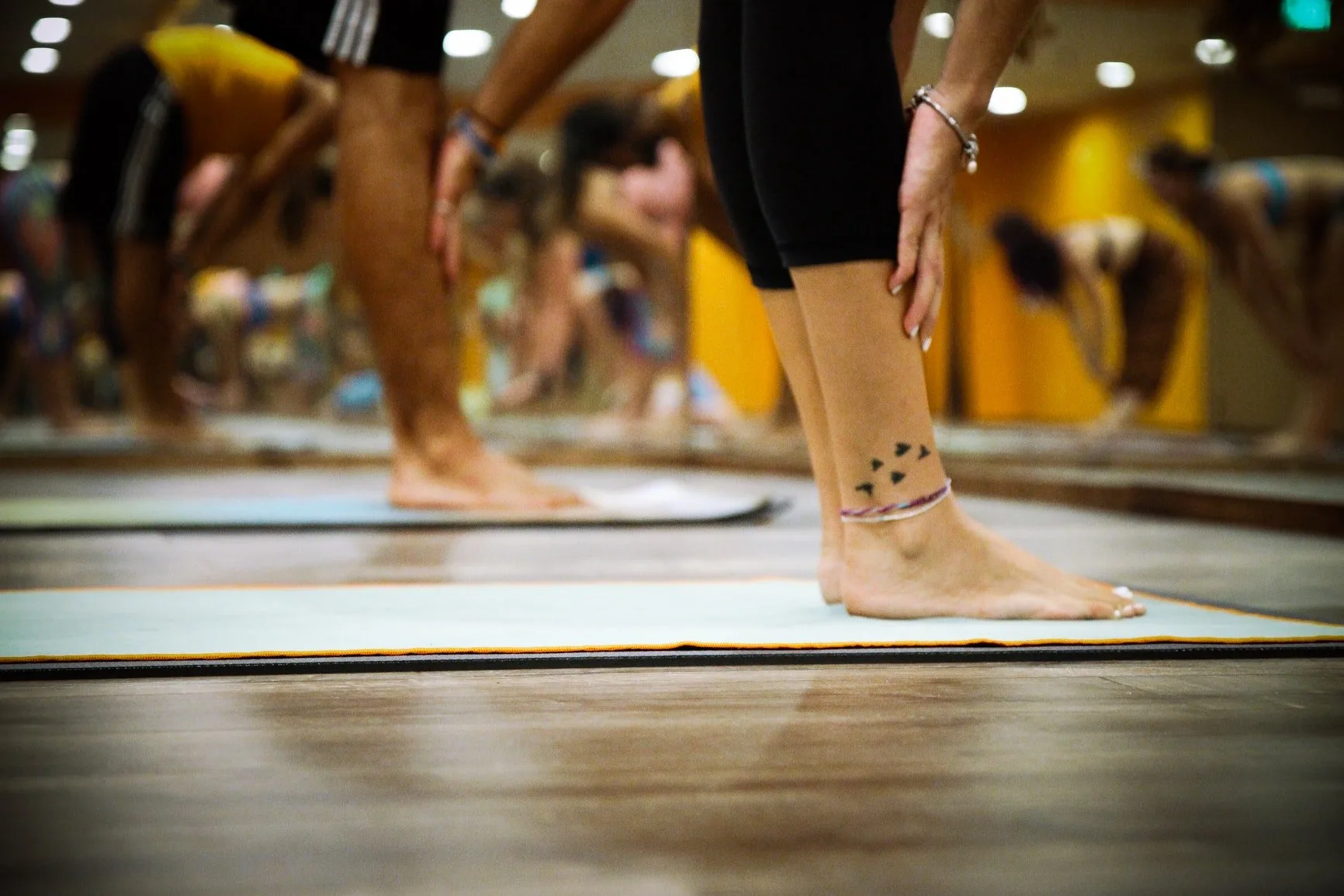Low-impact workouts such as yoga and pilates are great options for building muscle and endurance without the excessive strain on your joints. But which one is better for your health? We break down the differences and benefits of yoga and Pilates to help you decide which is best suited to you.
Why are low-impact workouts better?
As mentioned, low-impact workouts still allow you to build muscle, cardiovascular fitness, and endurance without unnecessary stress and strain on your joints and bones. In addition, low-impact workouts offer a far lower chance of injury and are a safer option for someone with an existing injury.
As such, low-impact workouts like yoga and Pilates may also be a good option for someone who struggles with a condition such as osteoarthritis or osteoporosis due to the workout being gentler on the bones, joints, and connective tissues.
Why choose Yoga?
According to Healthline, “Yoga originated in India over five thousand years ago, first mentioned in ancient Hindu scriptures known as the Vedas.”
Yoga can be best described as a combination of both mind and body fitness as it joins together physical exercise, deep breathing, and mindfulness. What you will experience in a yoga class will be moving through various movements and holding a count for a handful of poses.
Benefits of yoga
According to Johns Hopkins Medicine, the benefits of yoga include,
- Improved strength and balance – Slow movements and deep breathing increase blood flow and warm up the muscles, while holding a pose can build strength and balance.
- Back pain relief – Yoga is good for easing pain and improving mobility in people with lower back pain.
- Eased arthritis symptoms – Gentle yoga has been shown to ease some discomfort of tender, swollen joints for people with arthritis, according to a Johns Hopkins review of 11 recent studies.
- Support a healthy heart – Regular yoga practice may reduce levels of stress and body-wide inflammation, contributing to healthier hearts. Several of the factors contributing to heart disease, including high blood pressure and excess weight, can also be addressed through yoga.
- Relaxation and improved sleep – Research shows that a consistent bedtime yoga routine can help you get in the right mindset and prepare your body to fall asleep and stay asleep.
- Increased energy and happier moods – You may feel increased mental and physical energy, a boost in alertness and enthusiasm, and fewer negative feelings after getting into a routine of practicing yoga.
- Connects you with community – Participating in yoga classes can ease loneliness and provide an environment for group healing and support. Even during one-on-one sessions, loneliness is reduced as one is acknowledged as a unique individual, being listened to and participating in the creation of a personalized yoga plan.
- Promotes better self-care – Attending yoga classes allows for an opportunity to take dedicated time to yourself and focus on taking care of your mind and body.
Why Opt for Pilates?
According to Healthline, this low-impact workout emphasizes the use of important stabilizing muscles primarily of the core and back when performing small movements. When doing Pilates you must begin each movement/exercise with a breath that is controlled, this controlled breath acts to cause a contraction of the muscles in one’s core. When you think of doing Pilates, I’m sure you envision doing it on a mat, which is correct, but Pilates can also be done on equipment that uses levers, your body weight, and springs to allow for resistance.
Benefits of Pilates
According to the Cleveland Clinic, Pilates allows for countless benefits that include,
- Pain relief – Pilates is known especially for improving lower back pain, as it improves misalignment and core strength which contributes to lower back pain as seen in this 2020 study.
- Improved core strength – What happens to your core affects the entire body. One of the reasons Pilates is such a good workout is that it specifically focuses on building core strength.
- Good posture – Having a strong, aligned core makes it easier to have good posture.
- Flexibility – There’s quite a bit of stretching in Pilates, which naturally translates to improved flexibility.
- Balance – Strengthening your core during Pilates makes it easier to find and maintain your balance.
- Helps you better understand your body – Focusing on your body and breathing is central to Pilates. That awareness will help you better understand your body, for instance: which muscles are strongest and how they compensate for weaker muscles elsewhere, where you store tension and what makes you feel your best. That education can help you better understand the signals your body sends you every day.
- Improved breath control – Pilates is as much about intentional breathing as it is about the body. Being aware of and controlling your breath allows you to deepen your stretch and perform at a higher level.
- Improved well-being – Pilates gets your heart pumping and combines strength and resistance training with deep stretching, which improves your overall well-being.
Which is better?
Yoga and Pilates are both excellent choices for low-impact workouts, and both have vast benefits, due to this, it all depends on personal preference. If you have any sort of health condition, consult with a medical professional before starting with any form of exercise.

Photo by Dane Wetton on Unsplash
Yoga is a great option for someone who enjoys exercise where mindfulness and meditation are still accounted for while still being able to increase strength and tone. Almost all the movements and poses in Yoga can be modified to suit your body and its needs.
You may want to opt for Pilates if you want to build on core strength specifically, and you can add even more resistance but try out an equipment-based Pilates class. If you are recovering from an injury, the subtle movements that Pilates offers may be a good option. Like yoga, Pilates movements and exercises can be modified to suit you, whatever that may be.
Bottom line
You cannot go wrong with either of these low-impact workouts, as seen there are countless benefits for each, and almost everyone is capable of seeing results and experiencing the benefits firsthand. Proceed with caution if you have any sort of health condition, and contact a healthcare provider for professional advice on how to move forward.
References
Alves MC, de Souza Neto RJ, Barbosa RI, Marcolino AM, Kuriki HU. Effects of a Pilates protocol in individuals with non-specific low back pain compared with healthy individuals: Clinical and electromyographic analysis. Clin Biomech (Bristol, Avon). 2020 Feb;72:172-178. doi: 10.1016/j.clinbiomech.2019.12.009. Epub 2019 Dec 19. PMID: 31895994.
Jeter PE, Nkodo AF, Moonaz SH, Dagnelie G. A systematic review of yoga for balance in a healthy population. J Altern Complement Med. 2014 Apr;20(4):221-32. doi: 10.1089/acm.2013.0378. Epub 2014 Feb 11. PMID: 24517304; PMCID: PMC3995122.
Su CH, Peng HY, Tien CW, Huang WC. Effects of a 12-Week Pilates Program on Functional Physical Fitness and Basal Metabolic Rate in Community-Dwelling Middle-Aged Women: A Quasi-Experimental Study. Int J Environ Res Public Health. 2022 Dec 2;19(23):16157. doi: 10.3390/ijerph192316157. PMID: 36498231; PMCID: PMC9737173.
The Yoga-Heart Connection | Johns Hopkins Medicine
Yoga for Sleep | Johns Hopkins Medicine
https://www.healthline.com/health/fitness-exercise/pilates-vs-yoga
https://legionathletics.com/low-impact-workout/
https://www.livescience.com/low-impact-workout-to-build-muscle
https://www.planetfitness.com/community/articles/low-impact-exercises-what-they-are-and-why-should-you-try-them
https://www.hopkinsmedicine.org/health/wellness-and-prevention/9-benefits-of-yoga
https://health.clevelandclinic.org/everything-you-want-to-know-about-pilates





![women [longevity live]](https://longevitylive.com/wp-content/uploads/2020/01/photo-of-women-walking-down-the-street-1116984-100x100.jpg)









